Basic information about the temple
| Moolavar: | Sarvateertheswarar | Ambal / Thayar: | Periya Nayaki |
| Deity: | Siva | Historical name: | Teerthasthanapuram |
| Vriksham: | Pathiri | Teertham: | Sakala Teertham |
| Agamam: | Age (years): | ||
| Timing: | 7 to 11 & 4 to 7 | Parikaram: | |
| Temple group: | Vaippu sthalam | – | |
| Sung by: | Temple set: | ||
| Navagraham: | Nakshatram: | ||
| City / town: | Theerthandathanam | District: | Ramanathapuram |
| Maps from (click): | Current location | Karaikudi (54 km) | Ramanathapuram (73 km) |
| Pudukkottai (84 km) | Thanjavur (131 km) |
Location
Sthala puranam and temple information
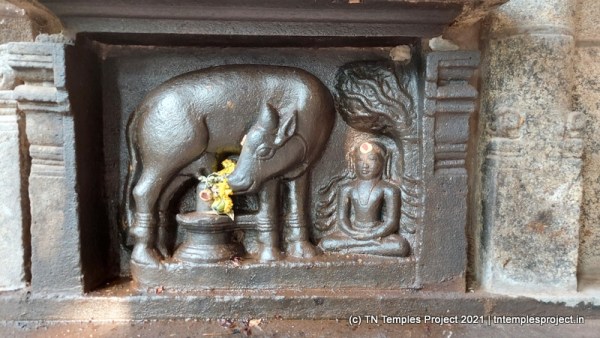
This ancient temple is connected with the Ramayanam, as are several places on this route from Vedaranyam to Rameswaram.
During His search for Sita, Rama came by this place. Feeling tired, he rested here for a while. He was then overcome by thirst, and knowing His divinity, Varuna – the rain god – made it rain here and the rainwater collected in a pond, which Rama slaked His thirst from. This pond came to be known as the Varuna Teertham.
At the time Sage Agastyar was worshipping Siva at nearby Tiruppunavasal, and hearing of Rama’s arrival, the sage hurried here. He inquired of Rama, the purpose of his visit. When informed that Rama was in search of Sita, and looking to defeat Ravana in battle, the sage warned Rama that it would be difficult to do so without the grace of Siva, since Ravana himself was a great Siva devotee. Rama, at Agastyar’s direction, bathed in the Varuna Teertham and worshipped Vriddhapureeswarar at Tiruppunavasal from here itself, and Siva appeared with Amman on the Rishabha Vahanam. He blessed Rama with the strength necessary to overcome Ravana.
One part of this sthala puranam says that in order to worship Siva with true devotion, Rama wiped off the tilak on His forehead, and applied vibhuti instead, as a form of surrender to Siva.
Watching all of this unfold in front of his very eyes, Varuna was overcome with gratitude towards Siva, and brought the waters of all of the world’s holy places to the Varuna Teertham. He also requested Siva to stay here forever, and to bless all those who come here, bathe in the Varuna Teertham and then worship Siva as Sarva Teertheswarar.
As this place was the recipient of all of the holy water bodies, Siva was named Sakala Teertham Udaiyar (the Lord of all the waters) and the place came to be called Teertha Sthana Puram (the place of all the Teerthams). Over time, Teertha Sthanam has corrupted to become Teerthandathanam. A second story is that because this place was where Rama was given water, it came to be known as Teertham Thandha Sthanam – later corrupted to Teerthandathanam.

A third puranam here is that a Chola king who was suffering from leprosy, took a bath in the sea and then worshipped here, after which he was cured of his disease. It is said that because of this, the place got its current name. However, there appears to be no etymological or other connection to support this.
According to some sources, this may be a Tevaram Vaippu Sthalam, but there are no clear pathigam references to support this. It is also not mentioned so anywhere in the temple or by the Sivacharyar.
This temple is west-facing, making it extremely special for pitru worship and pujas, and therefore as a pitru dosham parikaram sthalam as well. Amman faces east, and so one could say this is representative of the Guru-sishya Parampara where Siva instructs Parvati on esoteric truths.
The temple is easily recognisable by its tall but slender 5-tier raja gopuram. There is no dhwajasthambam inside, but there is a bali peetham and Nandi mandapam. While the maha mandapam is further ahead, the Amman shrine is to our right, while there is a separate shrine for Anjaneyar to our left. The Nandi in the Nandi mandapam is a beautiful example of Chola work.
The original temple here is said to be early Chola, with subsequent renovations by the Pandyas (and possibly the Vijayanagara dynasty). Gajalakshmi adorns the toranam at the entrance to the maha mandapam, while Agastyar is depicted on the toranam above one of the faux-niches on the entrance. In the maha mandapam are shrines for Murugan with his consorts Valli and Deivanai, Maha Vishnu with Sridevi and Bhudevi, and Sambandar.
Murugan and Vinayakar guard the entrance to the antarala, but their positions are swapped relative to what we normally see, with Murugan on the left and Vinayakar on the right. This is because Murugan is usually placed in the northern direction, while Vinayakar is on the south, and this rule is complied with here as well.
On the day of our visit, the moolavar Lingam was further embellished with an anthropomorphic rendering of His face, done in turmeric and sandal paste.
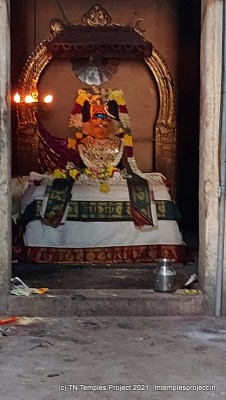
The garbhagriham takes up the entire width of the mandapam, so the koshtams are effectively in the outer prakaram, ie there is no inner prakaram. The usual koshtam deities are present in the order relevant to west-facing temples, as Durga, Brahma, Lingodhbhavar, Dakshinamurti (depicted solo, ie without the four Sanaka sages) and Nardhana Vinayakar. Chandikeswarar is also there on the northern side. In the prakaram are separate shrines for Bhairavar and the Navagraham. At several places on the outer wall, there are miniature bas relief images of scenes from the puranas, as well as individual deities. The resident Vinayakar here is a swayambhu Valampuri Vinayakar, who is not depicted as a separate vigraham, but as a bas relief on a larger piece of black granite.
There is also a separate Lingam – called the Adi Lingam – which is a little different in appearance from other Lingams we normally see. One school of thought suggests that this was the original Lingam of this temple. As mentioned earlier, Amman has an east-facing shrine. The unique aspect about this is that this is one of the rare shrines of Amman with a separate Lingam for Her. This aspect alone may suggest a Pandya influence in this temple (though usually such Lingams are reserved for Ammans who are named Meenakshi). Interestingly, both Siva and Amman get new clothes every day after the daily puja, ie, the clothing is never repeated after washing.
Other information for your visit
Contact
Gallery

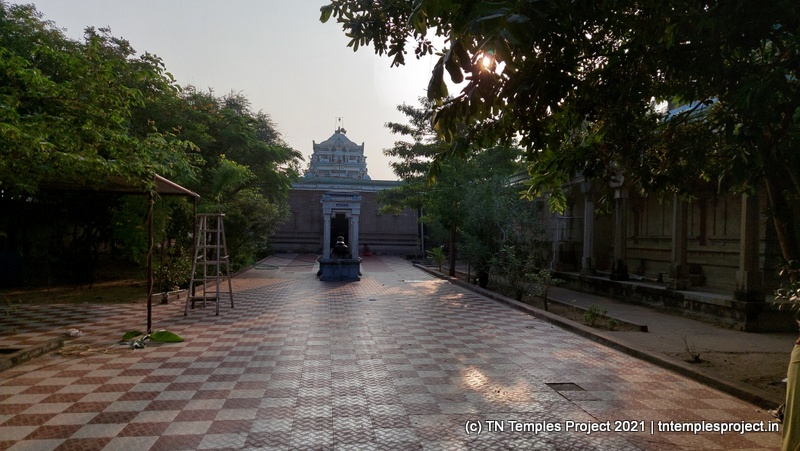
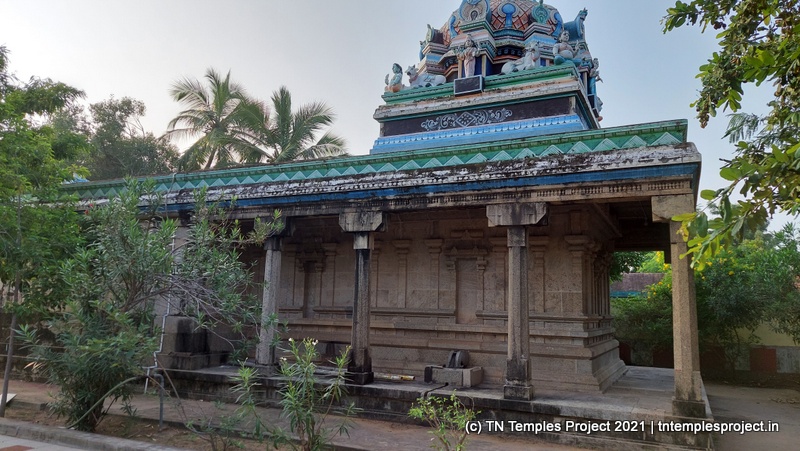

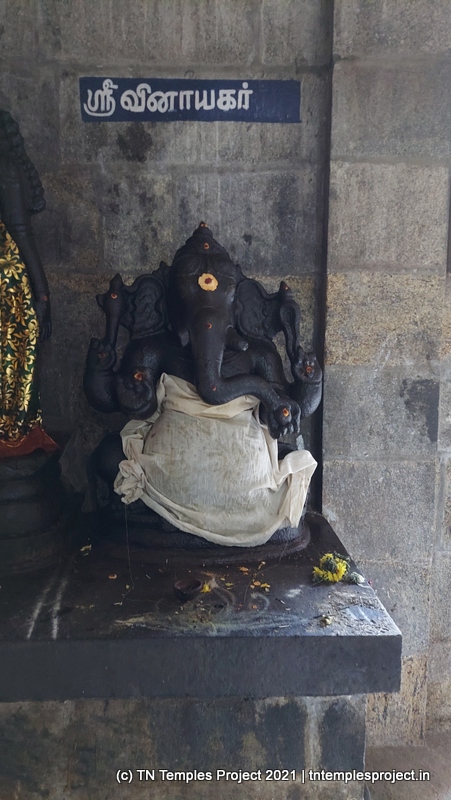
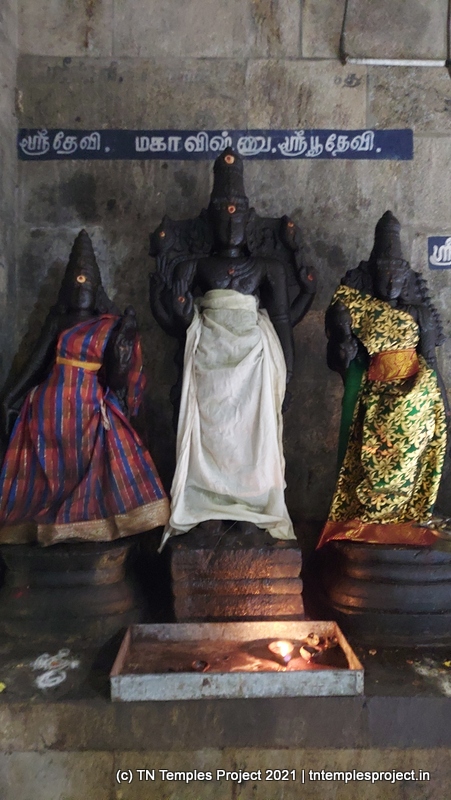
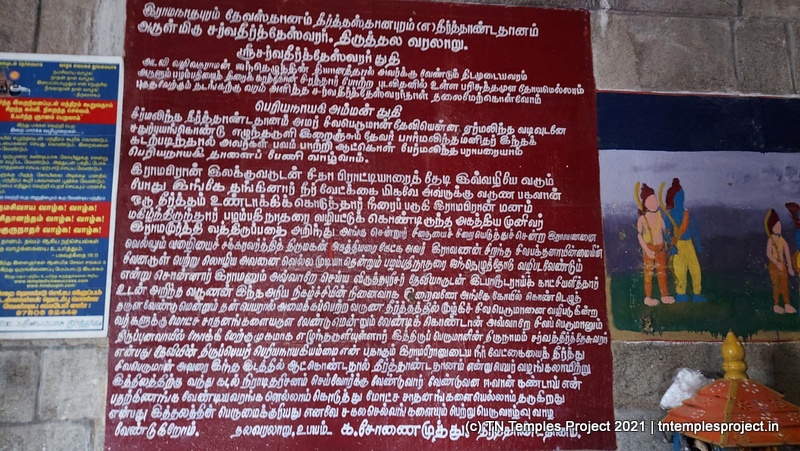
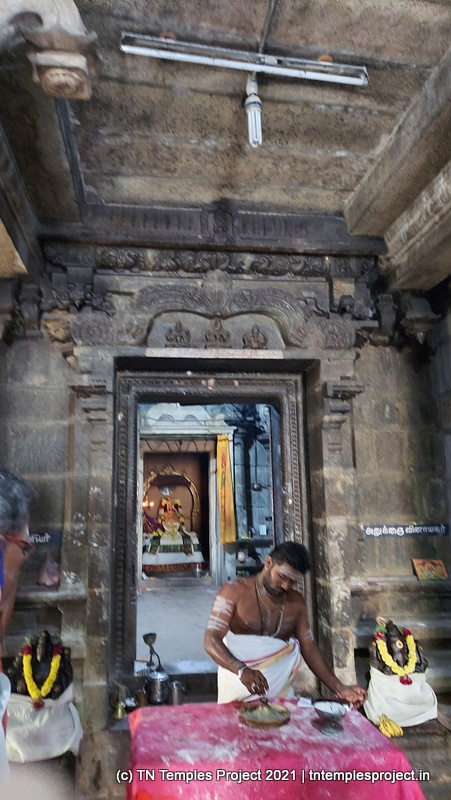


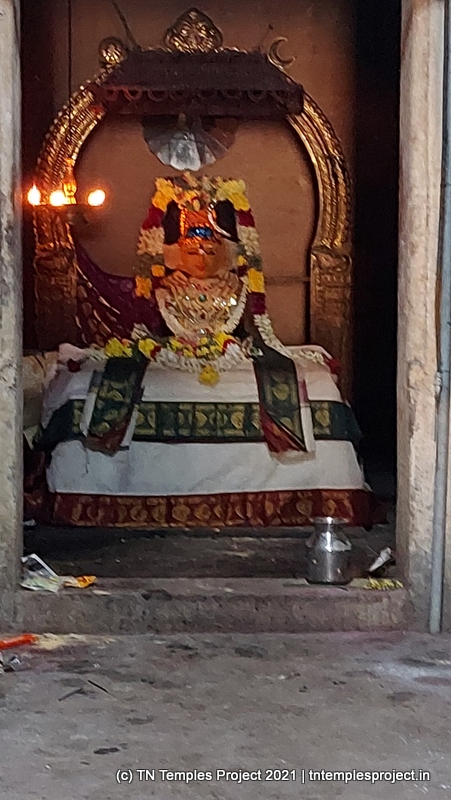


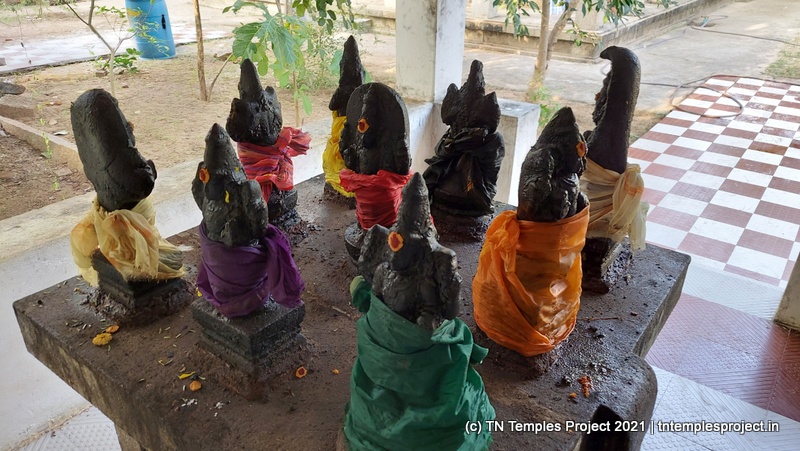



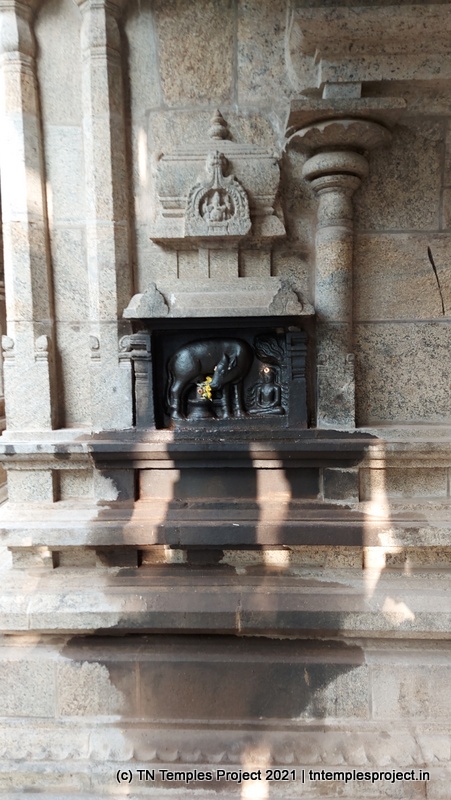
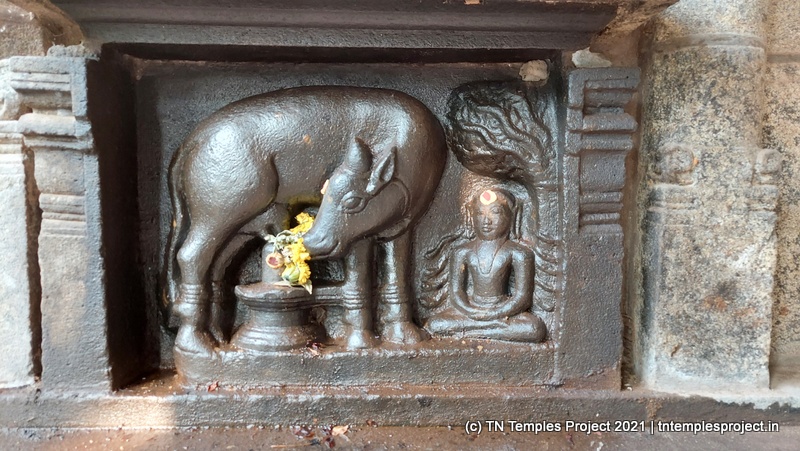
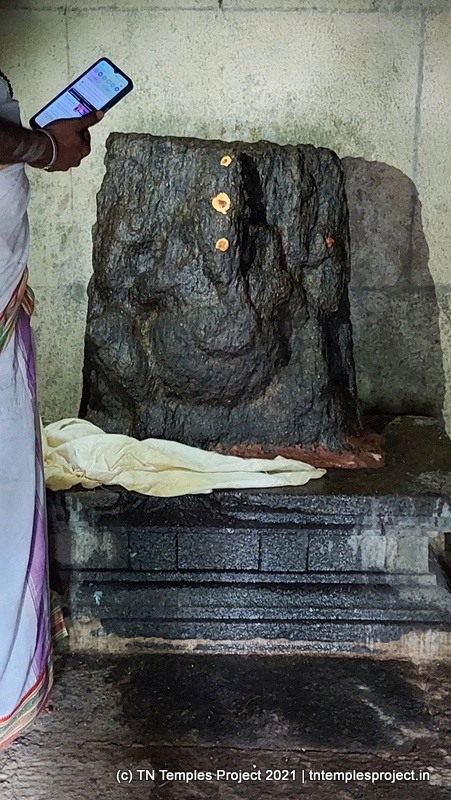


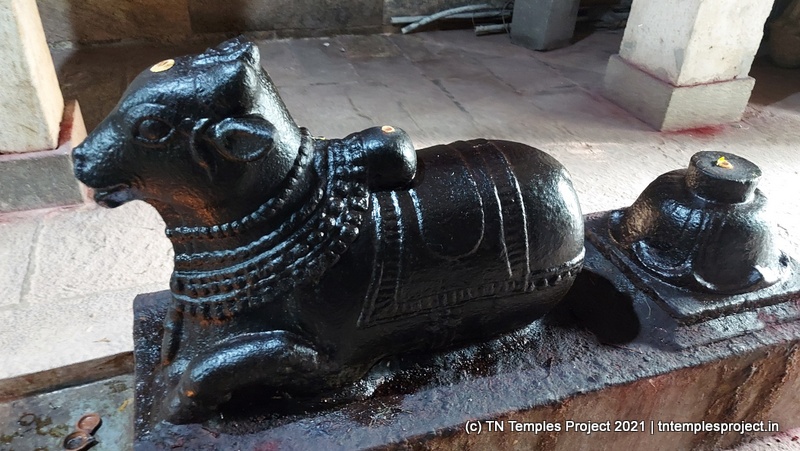


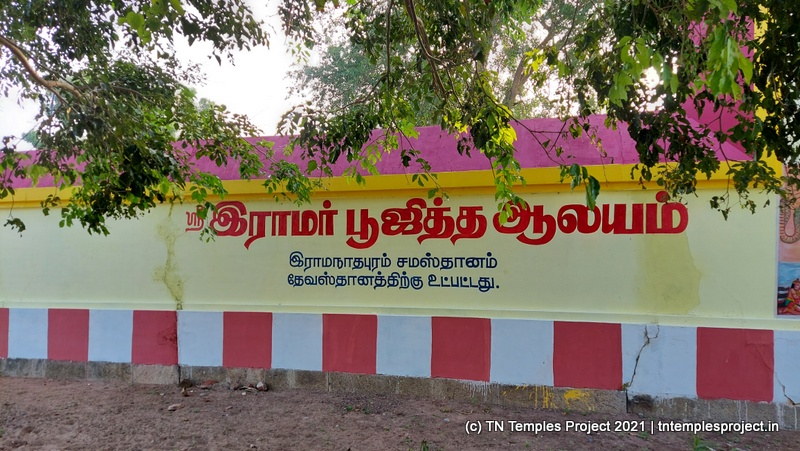
Watch sthala puranam video by temple Sivacharyar:
